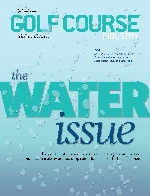 |
For the past several years there has been a major focus on the topic of climate change. It is difficult to separate the facts from the rhetoric, and the politics from the science. One thing is undisputable, however, and that is that the climate has always changed and it always will. While the subject of our ability to adapt to climate change is a very important one, I am concerned that all the climate rhetoric is overshadowing a topic that is even more important. This topic would be the dwindling supplies of available water. And by “available” I mean accessible and usable by humans. According to the United States Geological Survey, of all the water on Earth, only 1 percent is presently usable by humans. Of that 1 percent, 99 percent is ground water, .86 percent is lakes and 0.02 percent is rivers. In addition, that 1 percent is not evenly distributed across the globe, or for that matter even in the United States. While water use on golf courses is a small percentage of the water used for overall irrigation purposes, the fact of the matter is that golf courses tend to stick out like a sore thumb. In addition, using too much water for irrigation not only causes agronomic problems, but it also costs money. This economic point is not only directly connected with the actual cost of the water, but relates to the electricity used to move the water. Consider these other tidbits about water:
Every golf course should undertake a water assessment, including conducting a water-footprint analysis. Course designs can help courses facilitate water efficiency or force water overuse. Likewise, rectifying incorrect turfgrass selections or heavily irrigated vegetation can reduce water and financial waste. The question is…will golf become a true water conservation leader, or dry up and blow away with the dust? |
Get curated news on YOUR industry.
Enter your email to receive our newsletters.
Explore the July 2012 Issue
Check out more from this issue and find your next story to read.
Latest from Golf Course Industry
- Advanced Turf Solutions’ Scott Lund expands role
- South Carolina’s Tidewater Golf Club completes renovation project
- SePRO to host webinar on plant growth regulators
- Turfco introduces riding applicator
- From the publisher’s pen: The golf guilt trip
- Bob Farren lands Carolinas GCSA highest honor
- Architect Brian Curley breaks ground on new First Tee venue
- Turfco unveils new fairway topdresser and material handler





